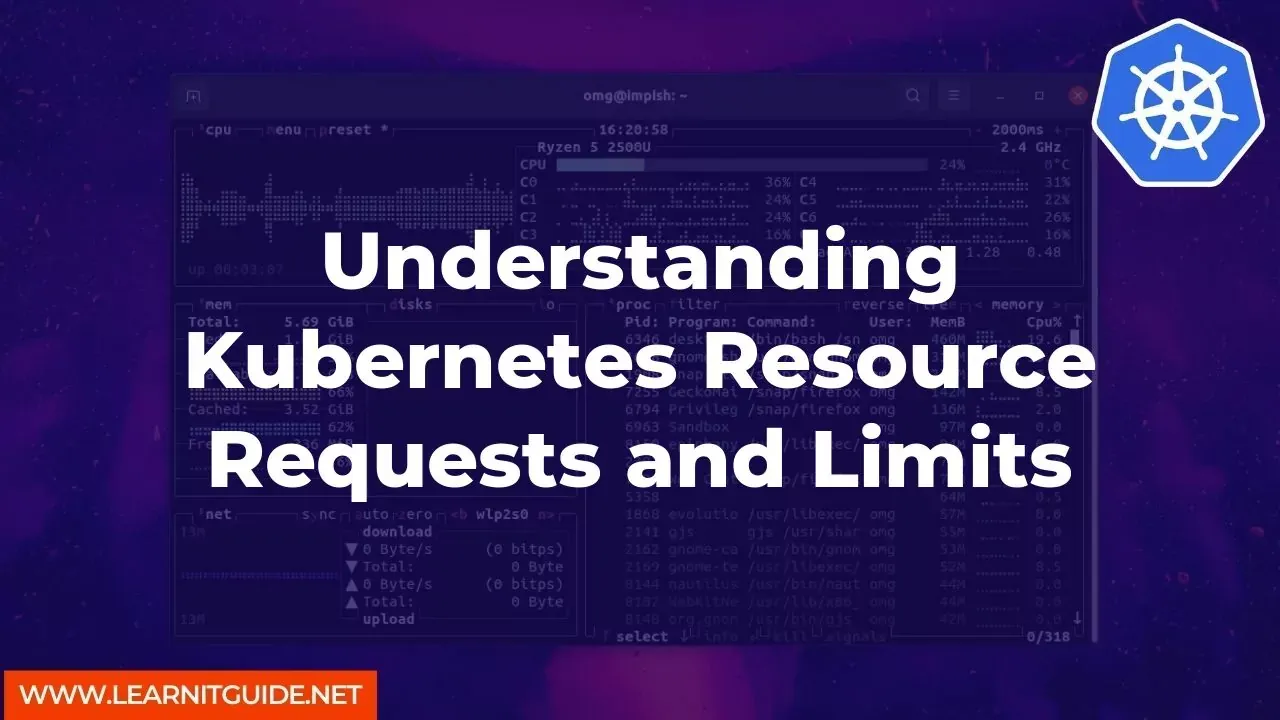Kubernetes is a popular container orchestration system that is widely used to manage and deploy containerized applications. When deploying applications on Kubernetes, it is essential to understand how to configure resource requests and limits. Resource requests and limits allow Kubernetes to allocate the required resources for an application to run efficiently while ensuring that resources are not wasted.
In this article, we will discuss what resource requests and limits are and how they work in Kubernetes. We will also explore some best practices for configuring resource requests and limits for your Kubernetes applications.
Understanding Resource Requests and Limits in Kubernetes
Resource requests and limits are two important configurations that determine the amount of CPU and memory that a container requires to run correctly.
Resource Requests: A resource request is the minimum amount of CPU and memory that a container requires to run without crashing. When a container is scheduled to run on a Kubernetes node, Kubernetes allocates the requested resources to ensure that the container can run smoothly.
Resource Limits: A resource limit is the maximum amount of CPU and memory that a container can consume. If a container exceeds its resource limit, Kubernetes will terminate the container to prevent it from consuming all the resources on the node.
Configuring Resource Requests and Limits in Kubernetes
To configure resource requests and limits for your Kubernetes applications, you need to specify the resource requests and limits in the container's deployment manifest file.
Step 1: Open your deployment manifest file in a text editor.
Step 2: Find the section that defines the container specifications.
Step 3: Add the following lines to specify the resource requests and limits:
resources:
requests:
cpu: "0.5"
memory: "512Mi"
limits:
cpu: "1"
memory: "1Gi"
In the example above, the container has a resource request of 0.5 CPU and 512 MiB of memory. The container's resource limit is 1 CPU and 1 GiB of memory.
Best Practices for Configuring Resource Requests and Limits
Here are some best practices to keep in mind when configuring resource requests and limits for your Kubernetes applications:
Always set resource requests: Setting resource requests allows Kubernetes to allocate the necessary resources for your container to run without crashing.
Use resource limits sparingly: Setting resource limits too low can cause your container to crash, while setting them too high can cause resource contention on the node. Set resource limits based on the expected usage of your application.
Monitor your container's resource usage: Monitoring your container's resource usage can help you identify potential issues before they affect your application's performance.
So, Kubernetes resource requests and limits are essential configurations that can help your applications run efficiently and prevent resource contention on the node. When configuring resource requests and limits, always set resource requests and use resource limits sparingly. Additionally, monitoring your container's resource usage can help you identify issues before they affect your application's performance.
Related Searches and Questions asked:
That's it for this post. Keep practicing and have fun. Leave your comments if any.








0 Comments